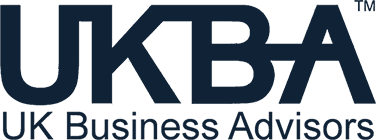
Asset finance is a popular way of securing funding for a business. Using your assets as collateral will fuel your ability to raise finance, offering a reduced risk to the lender and improving your chances of being accepted.
Not everyone will be eligible for asset finance. It requires you to have assets, usually property, vehicles, plant and machinery, equipment, stock or even invoices, that you are willing to use as security. However, if you do, it’s an excellent route for raising funding at more competitive rates and opening options in the lending market.
We’ve listed the top asset finance solutions and how they could support your company.
- Secured loan
A secured commercial loan offers your business capital in exchange for regular repayments. Using assets as security against the loan reduces the risk factor for the lender. If you default on payments, they will seize the assets to clear the balance.
With the lower risk factor, you will be able to raise larger sums at a lower interest rate than with an unsecured loan. It will also give you more choices on the markets as more lenders will be willing to offer secured loans, including banks.
Other criteria will dictate your eligibility and how much you raise, including your financial records and the strength of your application. However, the security offered will improve your chances, provided it is of a high enough value to satisfy the lender.
- Commercial mortgage
A commercial mortgage is used to acquire the property you need to operate from. Mortgages offer substantial funding that covers the investment required for your premises. The property you purchase becomes the collateral against the loan.
Like a loan, you will agree on a repayment schedule for the mortgage. It usually spans many years (usually 15 to 25). Commercial mortgages offer a loan-to-value of around 75% so you will need a high deposit of at least 25%.
Alongside property purchases, commercial mortgages may be used to develop premises, fund commercial developments and pay for buy-to-let housing projects. If the property is unencumbered or lowly geared, a source of refinancing.
- Invoice finance
Unlike other forms of asset finance, invoice finance requires minimal security. All you need is your B2B customer invoices.
Invoice finance gives funding up to 90% of the total amount owed through your unpaid invoices. You will repay it later – usually after 30, 60 or 90 days – when your customers have hopefully settled.
Invoice funding may be used across your invoices as an ongoing tool to boost cash flow. It also grows with your operations, enabling you to maximise capital as you send more invoices.
- Stock finance
Stock finance is an asset solution for product-based ventures with unused inventory sitting in their warehouses. This inventory is used as security for a loan based on the value of your stock.
Ahead of arranging a stock finance facility, the lender will require a third-party stock valuation to be conducted. After the loan is agreed upon, you will provide weekly or monthly stock updates, and funding will be updated to reflect any movement.
Stock finance is desirable as the only security required is your inventory. However, it’s worth noting that this sometimes needs to be at a substantial value for a lender to consider accepting you.
If you are eligible, it provides a consistent credit line for your company that fuels the operating cycle and boosts cash flow, even for seasonal businesses.
- Trade finance
Trade finance is relied upon in global trade, closing the gaps between importers and exporters. Businesses use it to fund the expense of supplies required to complete overseas orders or import materials to sell to UK and overseas customers.
The only ‘asset’ you need to provide to a trade finance provider is a purchase order form the customer, either overseas or in the UK, depending on whether you are importing or exporting. By accessing funding, you will cover the costs required to produce the order rather than having to wait for customer payment.
There are many benefits to using trade finance, including minimising the financial risk associated with trade and making it easier to approach global markets. The limited security also makes it accessible to most companies compared to other asset finance options. Generally, it is also combined with invoice finance as a way to quickly pay off the trade finance lender.
- Leasing and hire purchase
Unlike the other solutions on this list, leasing and hire purchases are used to secure assets rather than using your owned assets as collateral. It is an option to obtain the equipment you need to operate in exchange for manageable repayments (plus interest) rather than one upfront sum.
Assets like machinery, equipment, vehicles, furnishing, software and hardware can also be obtained through leasing and hire purchase.
Leasing the goods will allow you to rent them for an agreed timeframe, after which it goes back to the provider (though you may have options to extend your contract or upgrade it). With a hire purchase, you have the chance to own the asset unencumbered, provided you clear the balance.
As well as making the acquisition of assets more affordable, some leasing or hire purchase options will come with extras, including maintenance contracts and the ability to upgrade without selling the item first.
- Sale and leaseback
On the other side of leasing are sale and leaseback. If you have capital tied up in your assets, sale and leaseback allow you to retain use while using them to receive funding.
You will essentially sell ownership of the asset to a lender, who will then lease it back to you for regular repayments. It means you boost cash flow without harming productivity.
The main disadvantage of sale and leaseback is that you will receive 80% of the resale valuation, which may well be below market price.
However, if you have unencumbered assets to utilise, it’s a great way to release finance into your operations.
Securing asset finance
The umbrella ‘asset finance’ holds a wide range of funding solutions, serving various purposes. There are options for every type of business, regardless of the value or type of assets you own.
Identifying an asset-based solution that suits your needs makes it possible to raise substantial funds that support growth, maintain cash flow and boost results. With assets serving as security, your accessibility will likely increase, offering you more opportunities with better terms.
Speak to a UKBA advisor to determine which asset finance options are available to your business and how they may assist your broader financial strategies.
